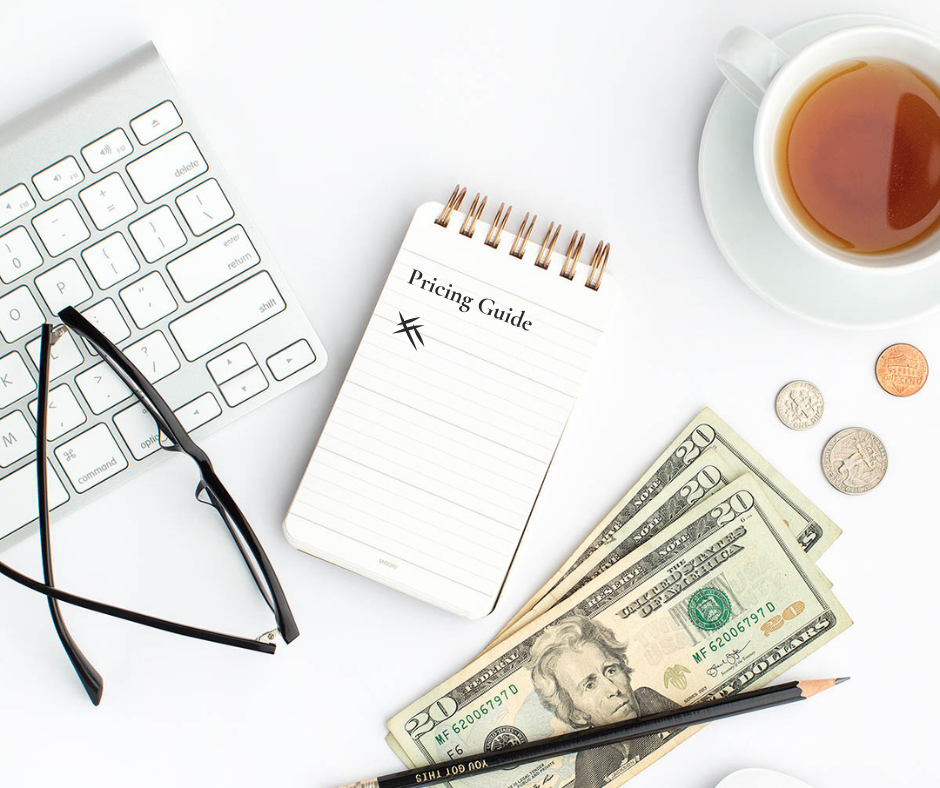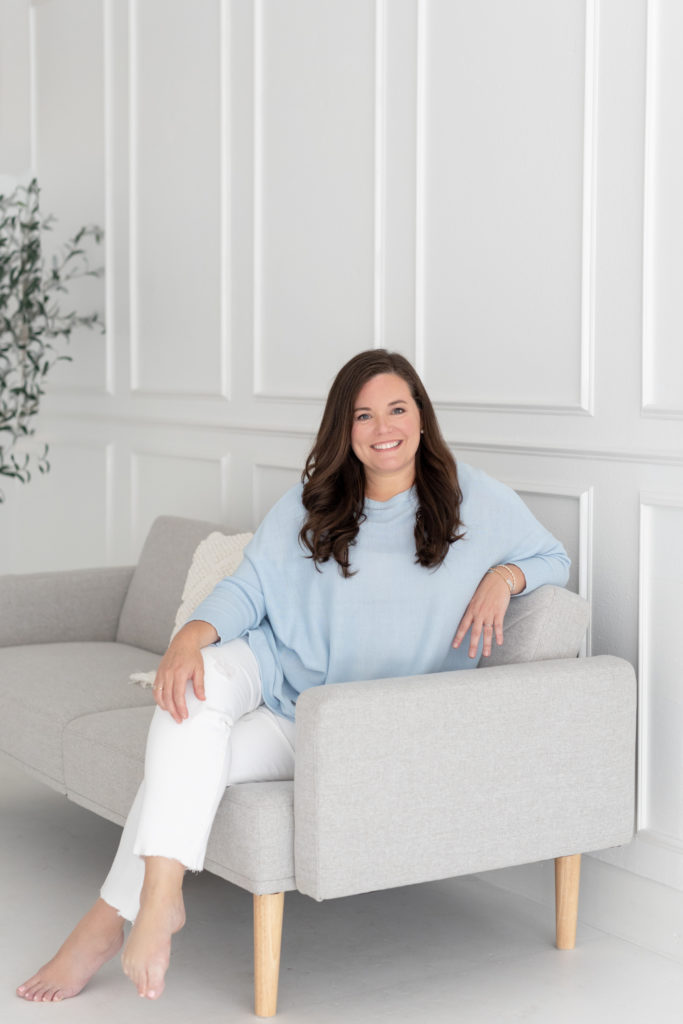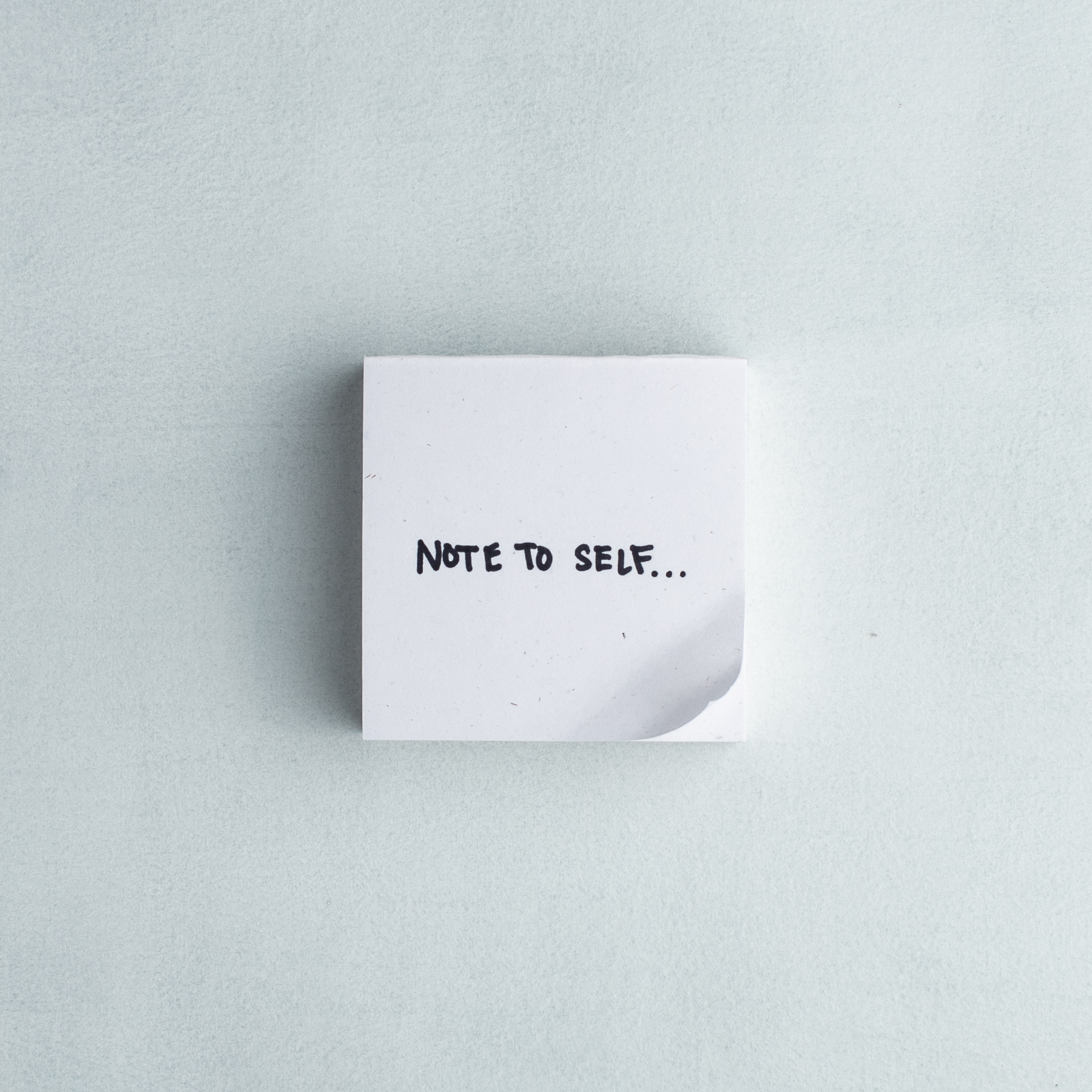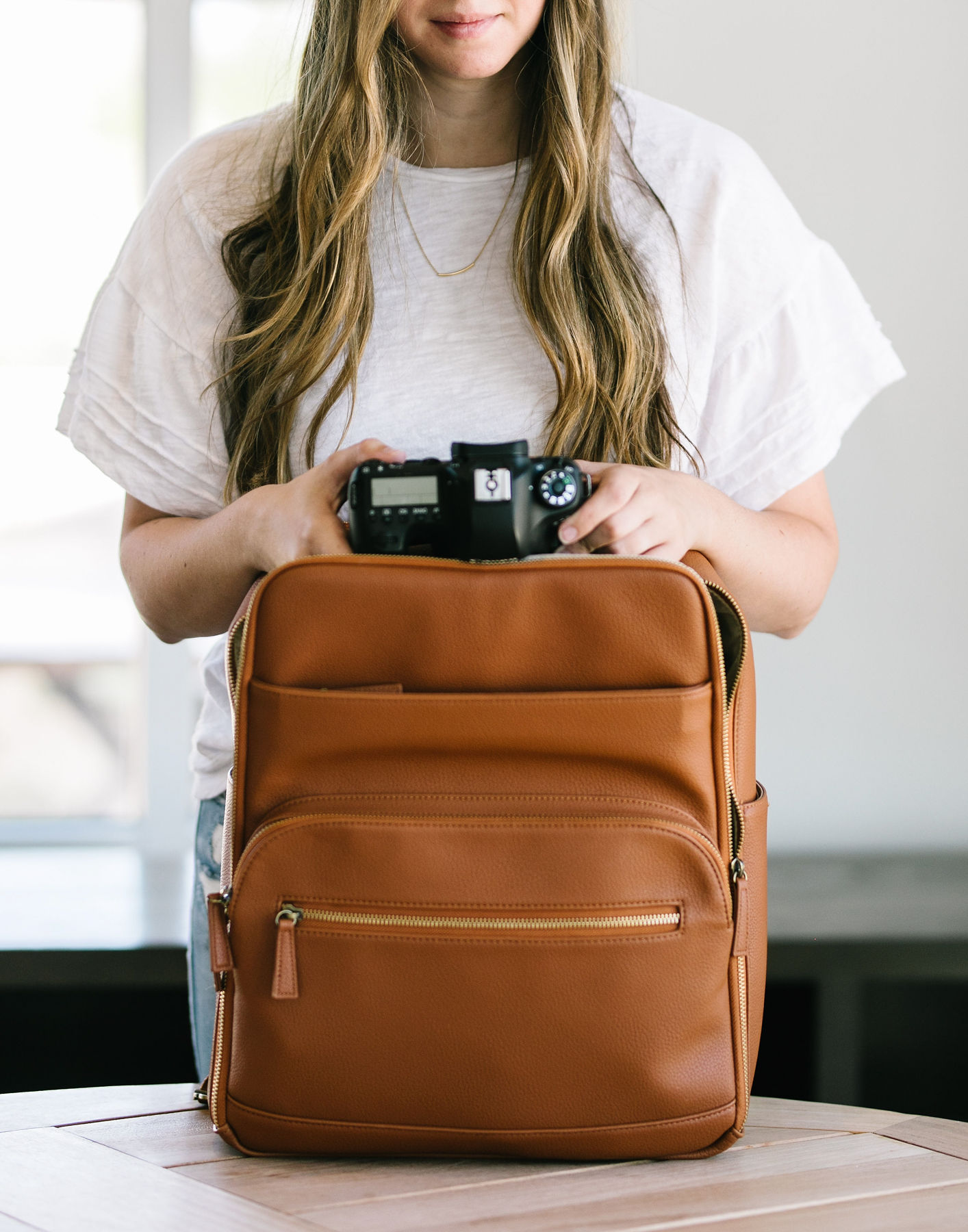
What would you rather say when you retire? I’m so glad I worked so hard for someone else my whole life. Or, I’m so glad I struck out on my own, built a successful business, and still had time for what’s really important in life — my family.
It can be easy to say the latter resonates with you, but making it happen is a whole different ball game.
Many photographers work long hours, nights, and weekends — trying to make their business successful. But we’re artists at heart, not necessarily business people. Figuring out the whole business side of things doesn’t often come naturally.
So let’s get to one of the issues that photographers often run into — pricing. To help clarify some very muddy waters, I’ve put together this pricing guide for commercial photography projects.

Meet Kassady
Hello! First I’d like to introduce myself a little. I was working a great corporate job as a derivative accountant. I enjoyed it, but I was working all the time. As a young mom, that wasn’t ideal for me.
Photography was my passion, so I decided to dive into learning everything that I could about it. And it worked! I became a professional brand photographer and grew to a 6-figure business within a few months.
Now, I’m passionate about two things. I still love taking pictures and I do it all the time, but I also love teaching other photographers how to do the same thing. So, whether you’re just getting started in photography or have been struggling for a few years to get your business off the ground, I want to help!
Let’s get started by learning about pricing for commercial photography projects.
What’s included in pricing a commercial or brand photography project?
The first thing is to understand your cost of doing business. This will vary depending on your area and how you run your business. Simply put, the cost of doing business is how much money you need to make to break even.
If you aren’t at least making this amount, you’re losing money to get people to let you take photos for them.
You need to make sure you’re including everything in your cost of doing business. As you make your list, you likely won’t forget to include studio costs, the cost of camera gear and equipment, and your monthly bills like utilities and software subscriptions.
However, don’t forget about other, more hidden costs like:
- Wear and tear on your vehicle and gas costs
- Office supplies
- Taxes
- Legal and accounting services
- Marketing
- Professional development
- Equipment insurance
- Health insurance
And the list goes on. Don’t forget to include your desired salary in there because your time is worth something too! (Don’t go crazy with this or you’ll have a hard time getting the numbers to work out. Here’s a handy calculator designed to help photographers figure out all these costs.
Once you get all this figured out, you’ll know the minimum amount you need to be making in order for your business to be successful. Armed with this knowledge, you’ll have a better idea of how much you need to be making per project (or how many projects you’ll need to aim to complete).
Figuring Out Your Creative Fee
When it comes time to price an individual shoot, you’ll need to sit down and figure out your creative fee. While it is based on the same rubric, it won’t be the same for every project.
Check out these questions to ask yourself to get a good idea of how to price your project.
What is the goal of the project?
Commercial photographers generally charge more than portrait photographers because the clients will be making money off their photos. Portrait photographers are usually taking photos for personal use.
How many photos do you need?
How many photos you need to produce will obviously have an impact on the final price. Sometimes clients will ask for an outrageous number of photos — like 75 — not realizing that this is overkill. After all, their wedding photographer gave them over 600 photos for their event.
But this is a different type of photography. Each photo is carefully styled and planned. Gently educate your client on how the photos are different and how less is really more in commercial photography.
How will the photos be used?
Usage is a huge topic with commercial photography. Basically, it boils down to the fact that the client will be making money off the images. How they use the images plays a large part in how much money they’ll be making. A few images for their social media is quite different from a magazine ad or billboard campaign.
Who is your target audience?
You also need to think about the audience that your image will be targeting. If you’re shooting high-end luxury items directed towards well-to-do people, it’s likely you’ll spend more on production costs because they expect to see a certain level of sophistication in the image.
Where would you like the photoshoot to take place?
You already know that when you shoot on private property, you’ll need permission to shoot commercial images. On top of that, you may need to pay to rent the space you want to use. This fee can vary widely depending on the place you want to use.
What is the main message you want to communicate?
What are you trying to convey in your images? More importantly, how much time will you spend or cost will you incur to get your message across?
What are your expectations on this project?
Finally, consider your own expectations from the project. if you expect to gain something from the shoot (such as portfolio images when you’re just starting out, etc.) it might be worth it to you to charge a little less.
Here’s a helpful table to help you figure things out.
| Creative Development: | |
| Art Direction / Creative Development / Planning | $___________ |
| Talent Scouting / Acquisition | $___________ |
| Location scouting | $___________ |
| Photography: | |
| Production – Photoshoot | $___________ |
| Usage Rights | $___________ |
| Video: | |
| Production – Video Shoot | $___________ |
| Post-Production – Social Media Videos* | $___________ |
| Post-Production – Video 1 | $___________ |
| Post-Production – Video 2 | $___________ |
| Extra Expense: | |
| Lighting / Grip | $___________ |
| Prop Stylist | $___________ |
| Photo and Moving Assistants | $___________ |
| Music | $___________ |
| Voice Talent | $___________ |
| Hair/Makeup | $___________ |
| Models | $___________ |
| Cleaning / Ironing | $___________ |
| Craft Services | $___________ |
Because this can easily get to be a sticky issue, always include an hourly rate for additional retouching and editing. Anything beyond the scope of what was originally decided on should be billed extra.
Now, you might be saying, “this table is great and everything, Kassady, but how do I know what dollar amounts to put in each box?”
Well, I can’t tell you exactly. Every shoot is different and has different production costs. Plus, your cost of doing business will change dramatically depending on where you live. Imagine the costs for a photographer working in Manhattan compared to one in Kentucky. That’s why it’s so important for you to do the math yourself for your specific cost of doing business (CODB).
Experience Level
This is a hard one, but you have to take your experience level into consideration as well. Even though you may be a talented photographer, when you’re just starting out your client just won’t receive the same level of service.
You won’t know what you’re doing yet and slipups can cause delays or other problems. Don’t sweat it though, it’s all part of the process when doing something new. You just can’t charge the same as someone who can offer a flawless experience. And don’t worry, once you get a few brand shoots under your belt, you’ll be that photographer who can offer the top-of-the-line experience to your clients.
Don’t go too low because you don’t want to be working for free, but it’s okay to charge a little less when you’re just starting out. When I started, I kept my prices quite modest and raised them as I progressed. My rule of thumb was that every time I started being booked 2-3 months out, I raised my prices.
With this in mind, you should realize that your prices can change rapidly if you’re progressing quickly. Always include a clause in your proposals that says something like “Note: This is an estimate. All fees are subject to a +/- 20% variance and are subject to change 60 days after being presented. Final costs will be presented at the contract phase once the project scope is fully determined. Additional travel fees may be required.”
If you don’t include this, you could end up with a client taking you up on outdated pricing you offered them 6 months ago.
Should You Charge Usage?
Finally, a big topic to consider is the usage fees. When you’re working with small, local businesses, usage is not as big of a deal. In fact, you can easily price yourself out of their budget if you charge usage fees.
Also, the idea behind usage fees is that the client will be making money off the image, so you should too. Small businesses that present your image to a small audience are likely to make far less money off your image than an international corporation that will be distributing your photo in front of a vast audience.
The three important questions to ask yourself about usage are:
- How will they use the image?
- Where will they use the image?
- How long will they use the image?
If you decide you charge usage, it is typically calculated two ways. You can either charge a flat fee per image or charge a fee for each licensing use.
For example, in a flat-fee pricing structure, you might charge a set $300 usage fee per image. However, if you know the client wants it for various applications, then you might charge different license fees for different usages such as social media, billboard, and print use.
Again, the price is based on how much exposure the image will get and thus how useful it will be for the client. A billboard license will typically be more expensive than a social media license, etc.
A Little Help From Your Friends
Wow!, that was a lot of information! Are you feeling a little overwhelmed? It’s okay! Rome wasn’t built in a day and neither will your business. It takes a while to figure out the business side of things, and much of it may not come naturally to you.
That’s where I’d love to help! Focus Creative is all about helping creatives focus on what is important to them — which is not expense sheets and taxes. You want to take pretty pictures and rock the socks off your clients without working yourself like a dog.
Unfortunately, that is what happens to many photographers while they struggle to figure out the business side of things. They’re spending all their nights and weekends trying to make their business work — and missing out on life in the process.
Here at Focus Creative, I offer the resources and training you need to become a successful photographer earning 6 figures. How do I know it works? Because I did it myself! I’m teaching you what I learned on my journey so you can spend less time wracking your brain and more time building your business.
Space is limited for my masterclass, so join the waitlist today! I’m not some guru just looking to make money off of you. I’m a business owner who managed to scale my photography business to a 6 figure income. My goal is to share the tools with you so you can do the same!






comments +